Today we have a Lenovo System x3500 M5 – 5464EEU in the lab for review. The Lenovo 5464EEU server is an all-in-one two socket tower or rack-mounted server designed for business-critical workloads in remote or distributed environments. One popular application for this class of machine is as a server in remote branch offices where the pedestal form factor does not require a full rack.
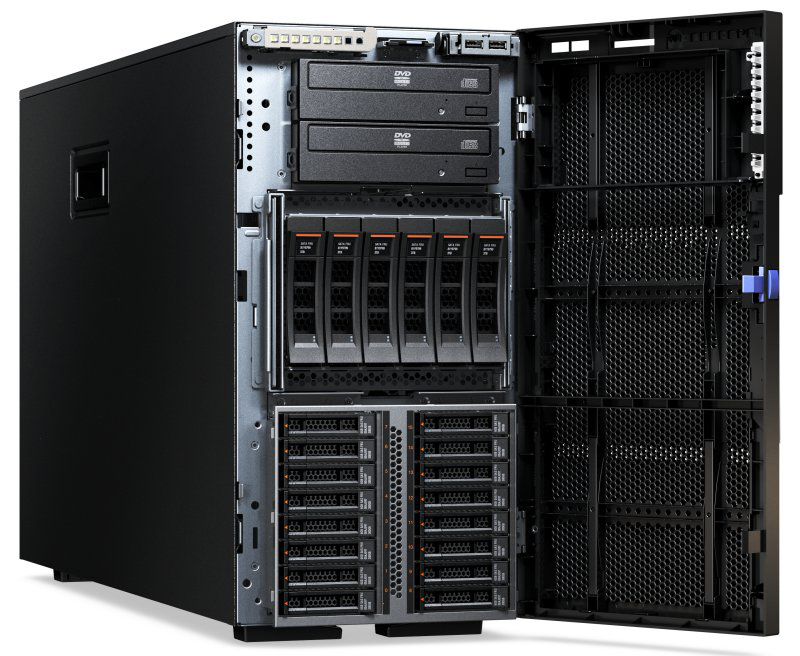
Key features and Specifications
Here are the key features from Lenovo:
- High-speed 2133MHz DDR4 SDRAM Registered DIMMs standard; 24 DIMM slots that support up to 384 GB maximum memory optional 16 GB RDIMMs, or up to 1.5 TB of memory with LRDIMMs 1
- One 550-watt, 750-watt, or 900-watt power supply fitted standard
- Integrated management module 2.1 (IMM2.1) with optional Remote Presence function
- Four PCI-Express 3.0 card slots standard, three more PCI-Express 3.0 slots with the second processor installed
- Support for up to thirty-two 2.5-inch drives plus one standard optical drive and one optional half-height tape drive or up to twelve 3.5-inch drives plus one standard optical drive and one optional half-height tape drive or up to sixteen 2.5-inch drives with up to six 3.5-inch drives plus one standard optical drive and one optional half-height tape drive
- Integrated quad port Gigabit Ethernet controller, plus one dedicated GbE management port
- One rear video port
- Tower or 5U rack standard models
- Two front USB, four rear USB ports, two internal USB ports
Here is the specification summary:
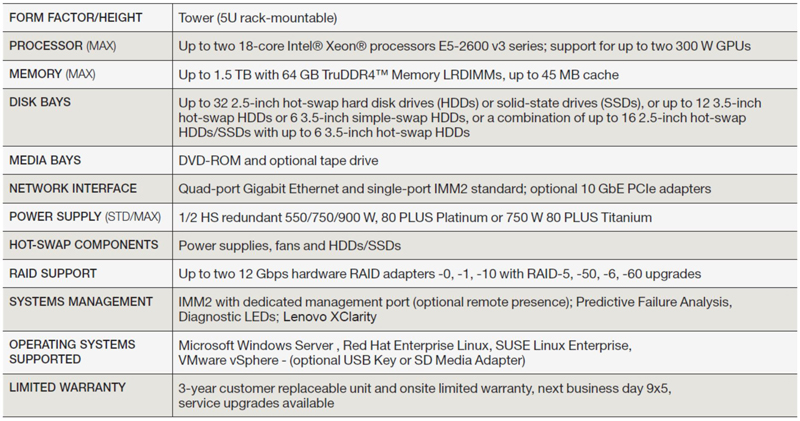
Close look at the Lenovo System x3500 M5 – 5464EEU
Here we have unboxed the 5464EEU and started setting the machine up for testing.
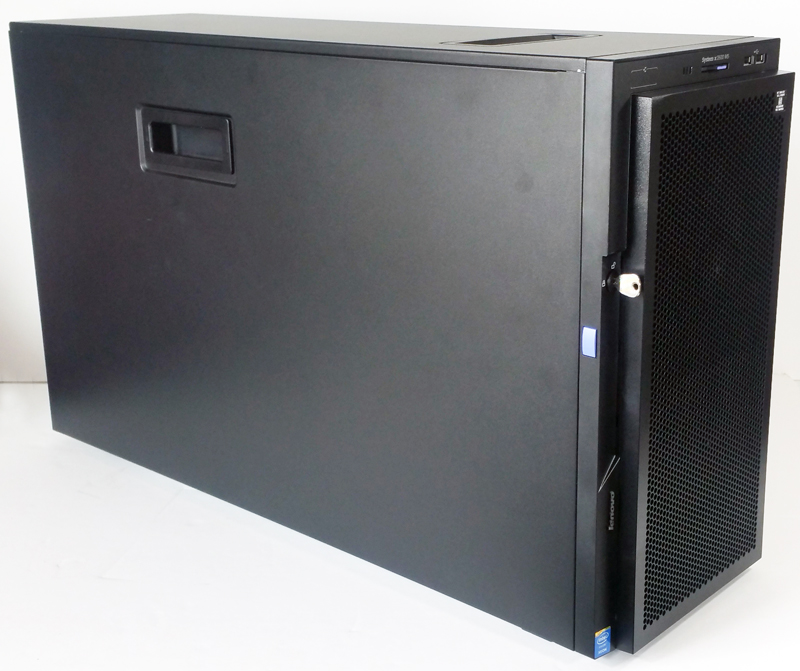
With a size of 5U and length of 28.3 inches gives this server a large footprint. You can expect the 5464EEU to weigh in close to 100 lbs when fully loaded.
Lenovo offers a rack mount kit for those that would prefer to install this server in a rack. One common use case here is when building remote office IT infrastructure, some locations may or may not have racks. This dual personality allows an IT organization to standardize on one chassis then customize the form factor to meet a specific deployment need.
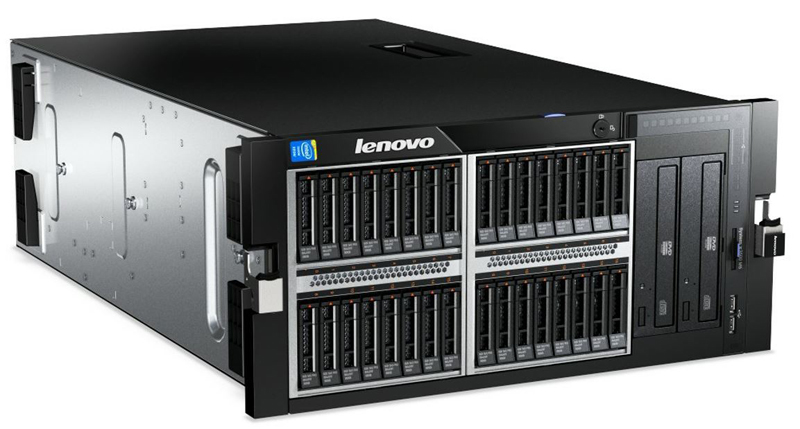
The front door is key lockable for security. After the door is unlocked, press the blue button on the left-hand door side. Here we can see how the drive bays can be configured. The drive bays offer an incredible number of options for how you want the server to be setup. Our server came with blank EM shields covering three of the drive bay expansion areas.
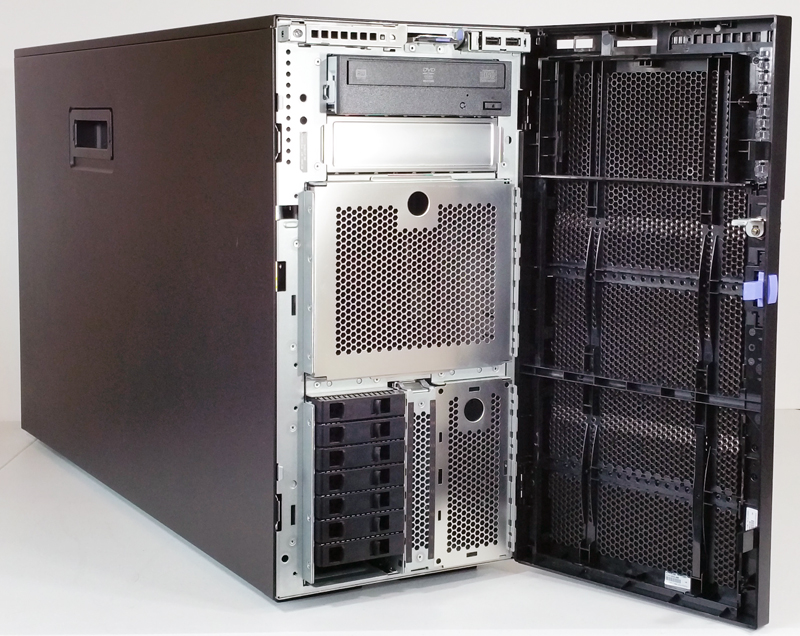
The available configurations for storage are staggering:
- Up to 32x 2.5-inch hot-swap SAS/SATA HDDs
- Up to 12x 3.5-inch hot-swap SAS/SATA HDDs or SSDs
- Up to 6x 3.5-inch hot-swap HDDs + 16x 2.5-inch hot-swap drives HDDs/SSDs
- Up to 6x 3.5-inch simple-swap SATA HDDs
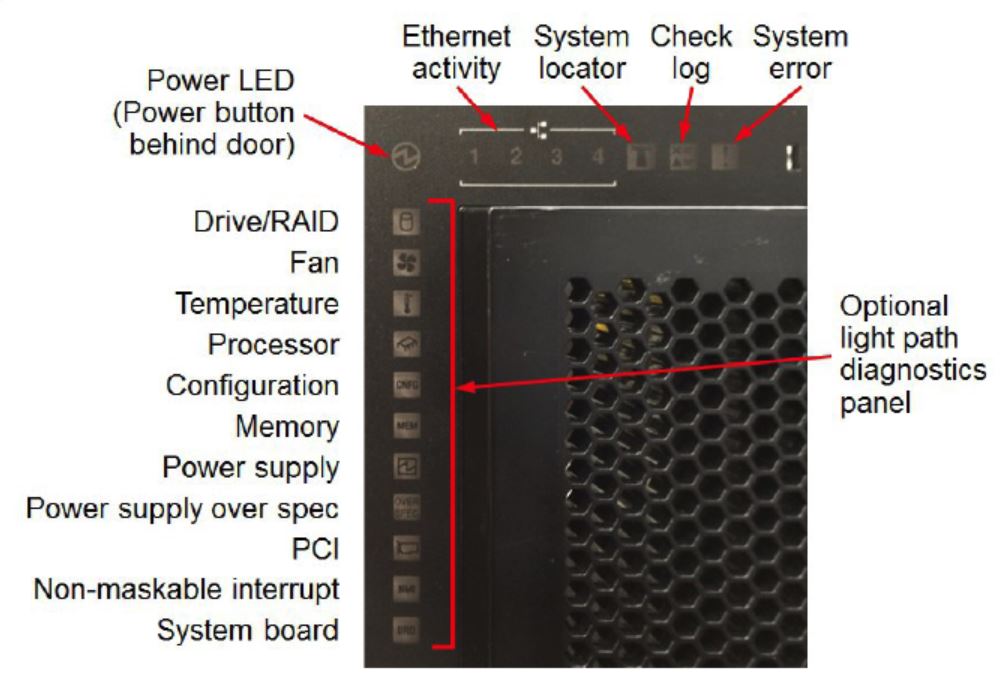
An optional diagnostics panel is available that shows extended system status through the LED displays. This can help less-technical staff on the ground relay information to remote IT for assistance without needing to log in.
Looking at the back we see the two redundant hot-swap power supplies are mounted along the back side of the server, freeing up space inside the main case. This effectively adds an additional 1U to the server, which gives it its 5U thickness.
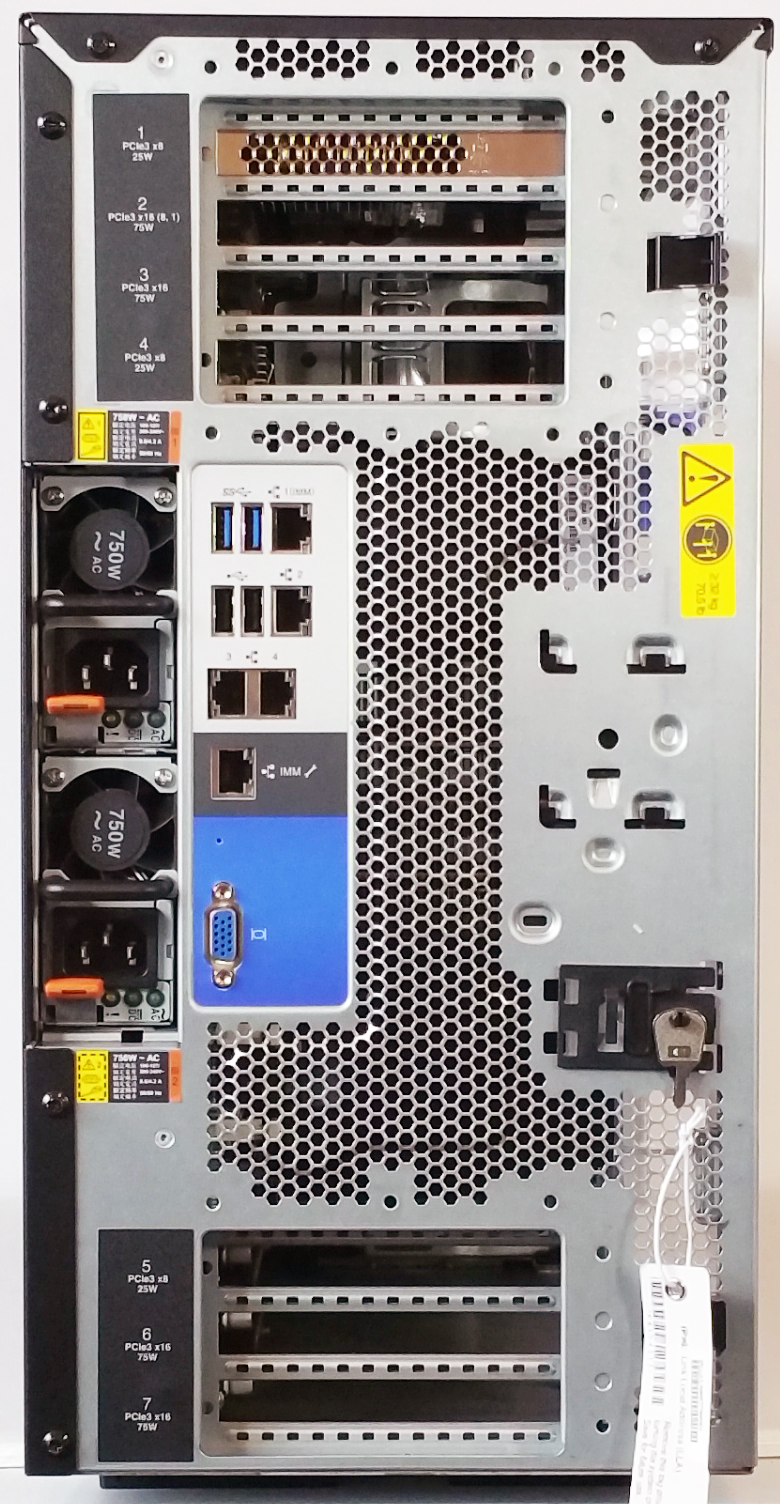
Network ports include four 1 GbE and one dedicated remote access port. Lenovo handles 10GbE (and faster) networking needs via add-in cards.
PCI Expansion Slots:
- Up to seven slots with two processors and four slots when one CPU is installed. All slots are PCIe 3.0 slots:
- Slot 1: PCIe 3.0 x8 (x8 wired); full-height, half-length
- Slot 2: PCIe 3.0 x16 (x8 wired); full-height, full-length
- Slot 3: PCIe 3.0 x16 (x16 wired); full-height, full-length
- Slot 4: PCIe 3.0 x8 (x8 wired); full-height, full-length
- Slot 5: PCIe 3.0 x8 (x8 wired); full-height, half-length (requires second processor)
- Slot 6: PCIe 3.0 x16 (x16 wired); full-height, full-length (requires second processor)
- Slot 7: PCIe 3.0 x16 (x16 wired) full-height, full-length (requires second processor)
- Slots 3 and 6 support double-wide GPUs
We do like the attention to detail labeling each PCIe slot clearly at the rear with a slot number, PCIe configuration and power envelope.
Let us take the side panel off and get a look inside the chassis.
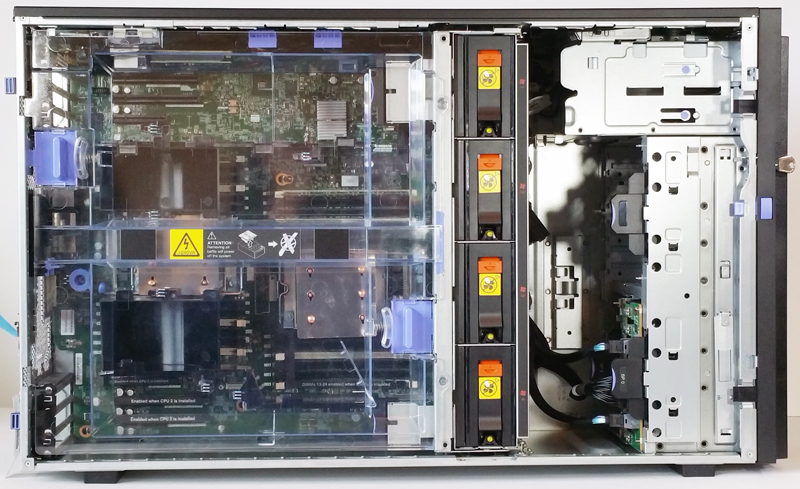
The 5464EEU uses a large plastic cooling shroud to direct airflow from the cooling fan mid-plane across the CPUs and PCIe expansion cards. The CPU Heat sinks do not have fans attached to them. This is a standard cooling configuration in most 4U/ 5U servers as it allows for cooling redundancy while still maintaining lower power consumption.
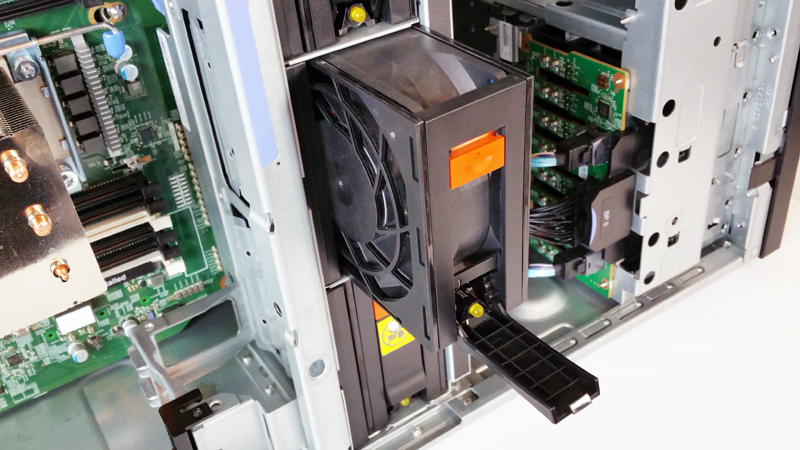
Each of the fans on the fan bar is hot swappable and simple pull out for replacement if needed.
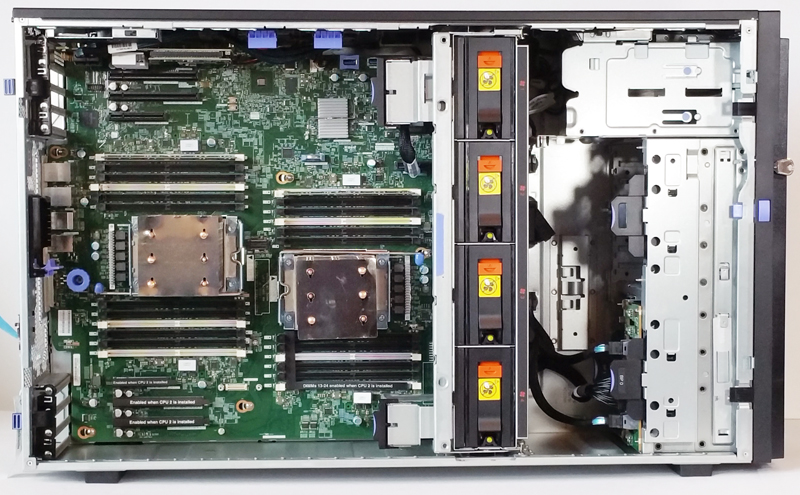
With the cooling shroud taken off, we have easy access to the motherboard area.
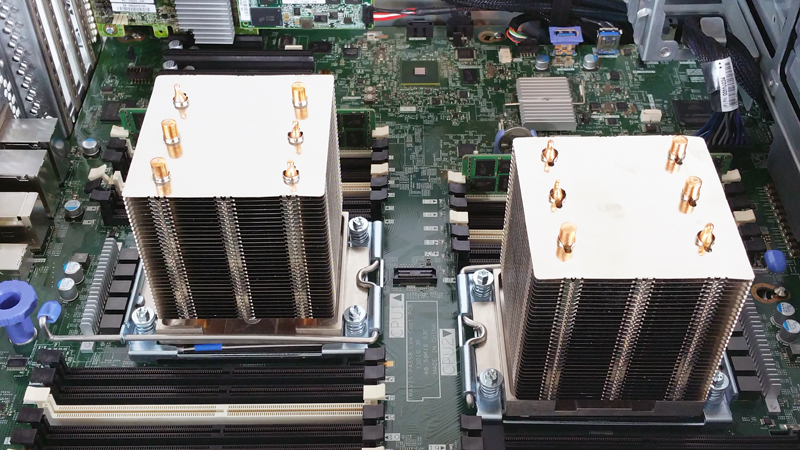
Here we are looking at a close up of the processor heat sinks. You can see the copper heat pipes as well as socket modifications that Lenovo does to make the CPU sockets more serviceable. One example of this is the larger retention levers.
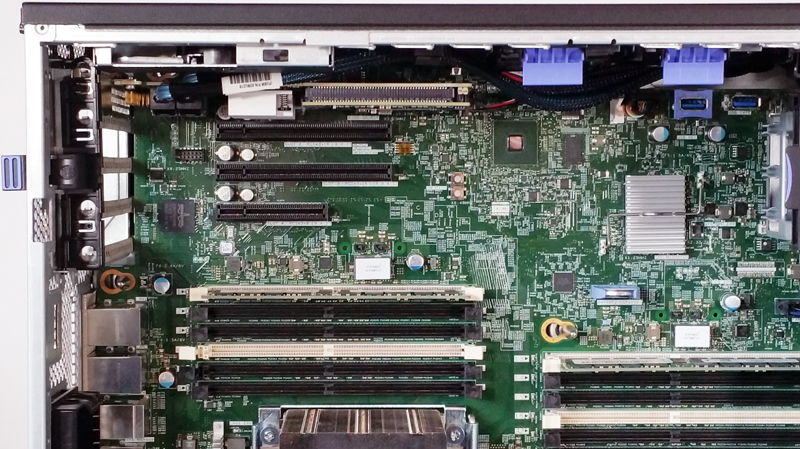
The bottom PCIe and Memory slots are only available if two CPUs are installed. Lenovo even has blanks telling a user that the slots are not available in single-CPU configurations.
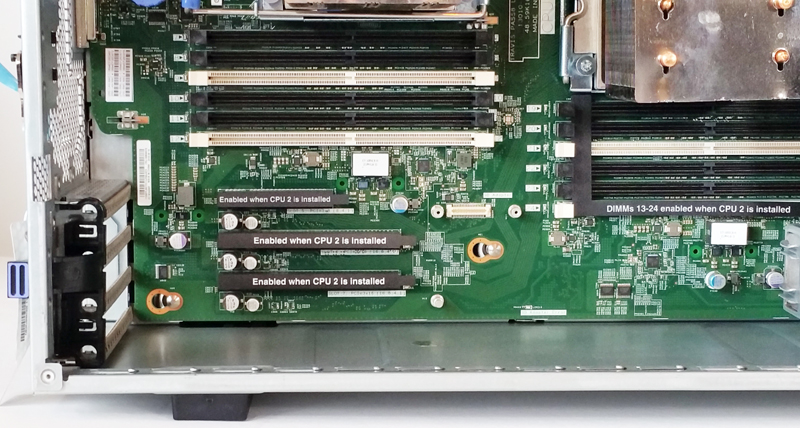
Likewise, Lenovo puts a similar note on the DIMM slots if needed. Each CPU has access to a full set of 24 DIMMs (3 DIMMs per channel) which is the maximum on the Intel Xeon E5 V3/ V4 series platform.
For those wondering about the single-CPU configuration, this is very common, especially for storage server configurations.
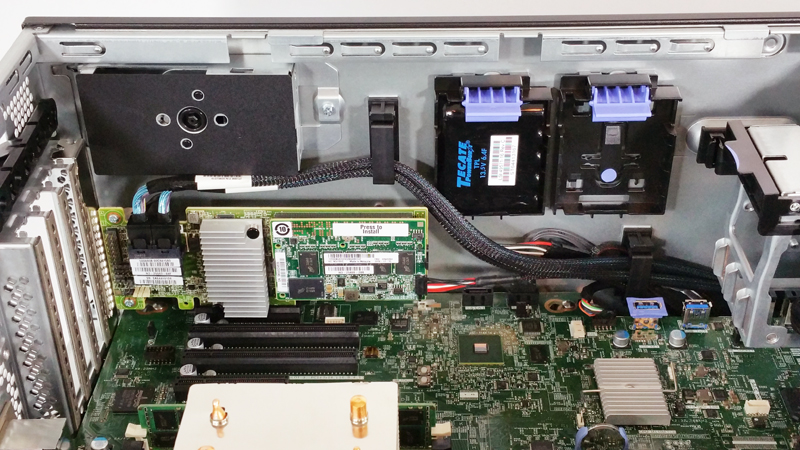
Looking at the inside top of the server we see our RAID adapter and holders for RAID adapter SuperCap modules. If the power fails, these are the modules that ensure data integrity until normal operation resumes.
Integrated Virtualization
The server supports the VMware vSphere (ESXi) hypervisor on one or two SD cards with the optional SD Media Adapter for System x. This adapter uses a dedicated connector on the system board. Booting VMware ESXi via SD card is a popular option.
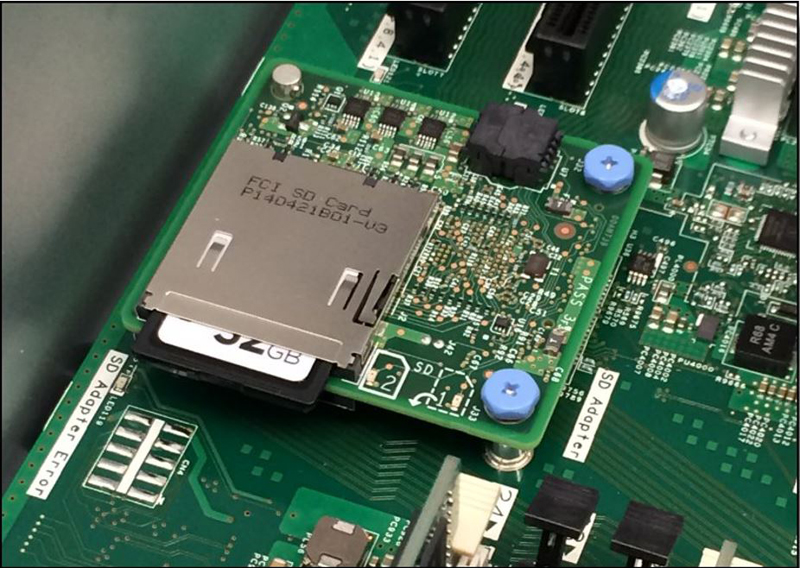
When only one SD card is installed in the adapter, you can create up to 16 volumes, each of which is presented to UEFI as a bootable device. When two SD Media cards are inserted, volumes can be mirrored (RAID 1) across both cards, up to a total of eight mirrored volumes. The use of mirrored volumes improves system availability because the server remains operational, even if one SD card fails. The RAID functionality is handled internally by the SD Media Adapter.
Lenovo IMM and BIOS
Let us take a look at managing the 5464EEU with its built-in Integrated Management Unit (IMM). The IMM is different from past Lenovo units we have reviewed, it is a very robust remote management system.
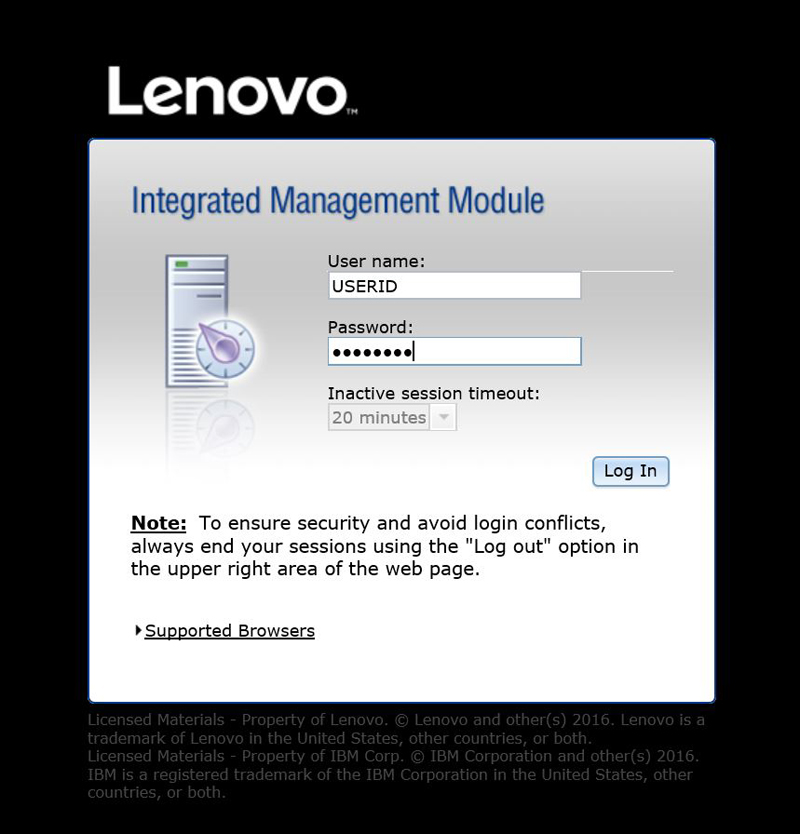
As with other IPMI systems that most of us are used to working with all that is needed is the IP address of the server and then logging in.
Default login information is:
- Username: USERID
- Password: PASSW0RD
In this case, use a Zero instead of a Cap O for PASSW0RD.
After login, we find several screens for managing the server.
Here we find several options for remote control, each of which will require a key file to be able to use. This is different than past Lenovo machines which required an IPMI Module installed on the motherboard. In this case, Lenovo’s IMM2.1 uses a key file which you need to get from Lenovo. We used the Java Client like we would with most servers we run.
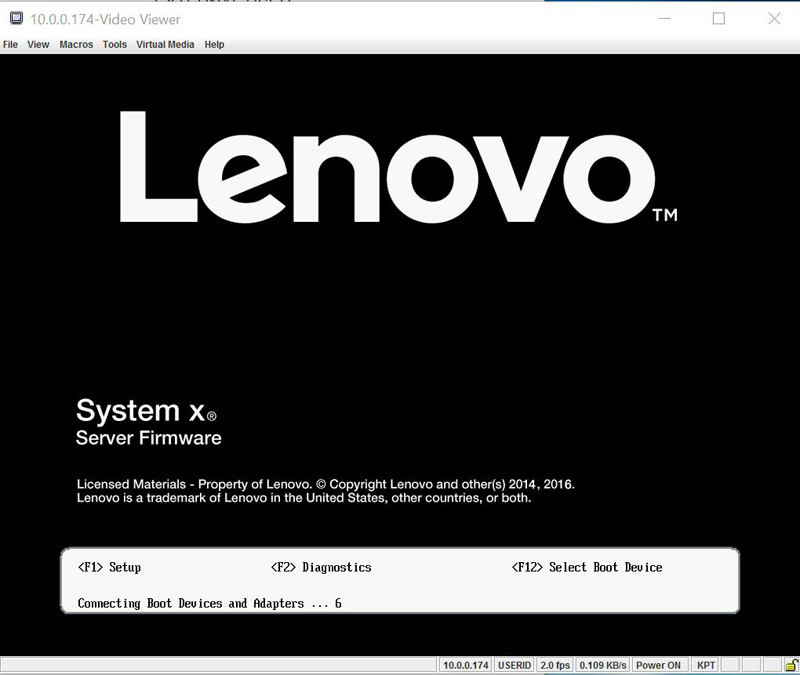
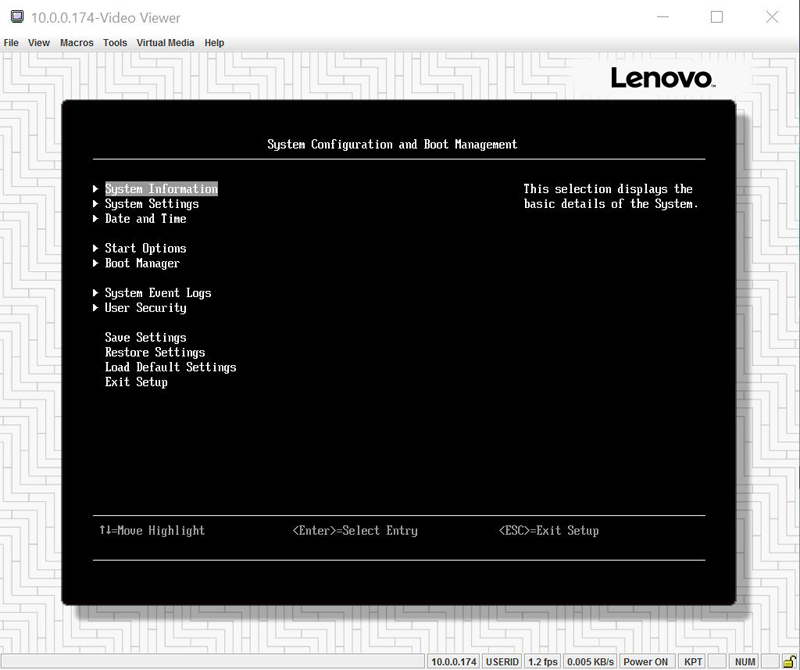
The actual BIOS interface is rather simple and offers only basic options.
Our Test Setup
For testing we used our Lenovo System x3500 M5 – 5464EEU was equipped with:
- CPU: 2x Xeon E5-2640v3 16 Cores/32 Threads total
- RAM: 2x 16GB DDR3 RDIMMs
Linux-Bench Test
We ran the motherboard through our standard Linux-Bench suite using Ubuntu 14.04.5 LTS as our Linux distribution. Linux-Bench is our standard Linux benchmarking suite. It is highly scripted and very simple to run. It is available to anyone to compare them with their systems and reviews from other sites. See Linux-Bench.
To check out the results on the website head over here.
The overall performance was on par with what we would expect given the configuration. We would recommend in a production system adding, at minimum, three more DIMMs per CPU for a total of eight DIMMs to fill each CPU’s memory channels. We also suspect many buyers will make use of higher-speed networking and additional storage functionality.
Final Words
Our Lenovo System x3500 M5 – 5464EEU system came to us in what we would call a minimal configuration, we only had two CPU’s and two sticks of RAM, no drives were installed. It was simple to boot from out Ubuntu live DVD and run our Linux-Bench scripts which gave us a good idea on how the equipped processors, and overall system, performed.
We did like Lenovo’s IMM2.1 interface which provides a lot of options, some of which you would find only in the BIOS. When looking at the BIOS interface itself there are minimal options to adjust, date/time and boot device selection about sum’s up available options.
Where this system really shines is the vast number of expansion devices that can be equipped and drive configurations available. Configuration options can start out with a base system, then later as needs increase the 5464EEU can be scaled up with added RAID adapters that increased high-performance storage capacity and additional high-speed network cards can be installed.

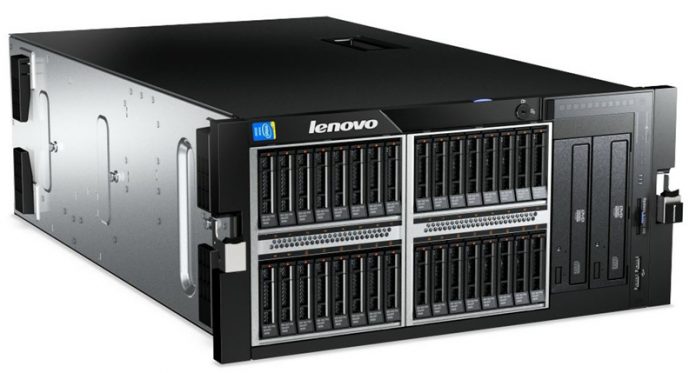
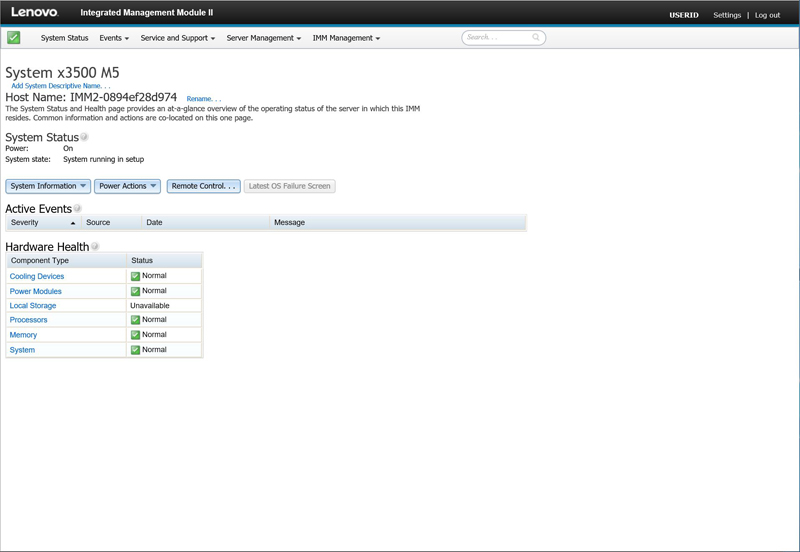
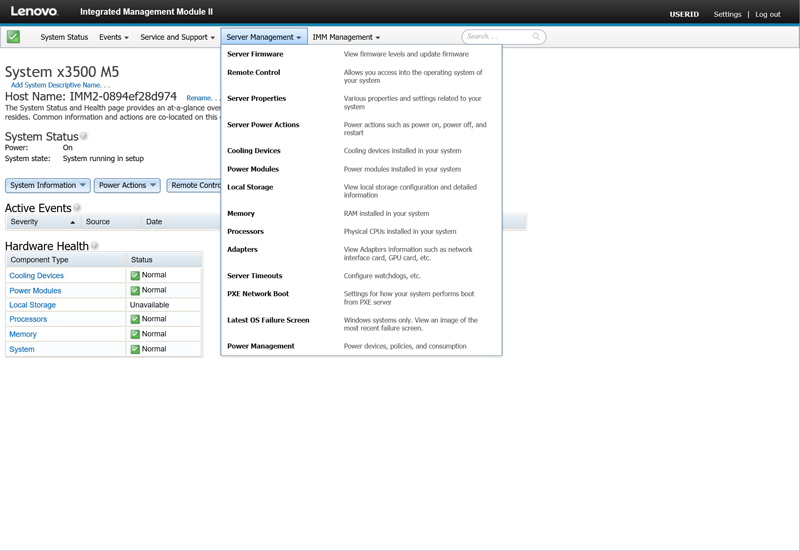
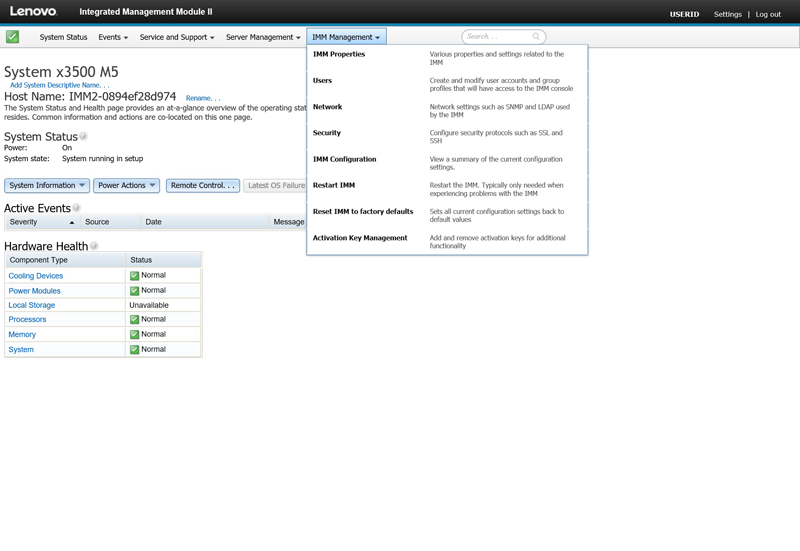
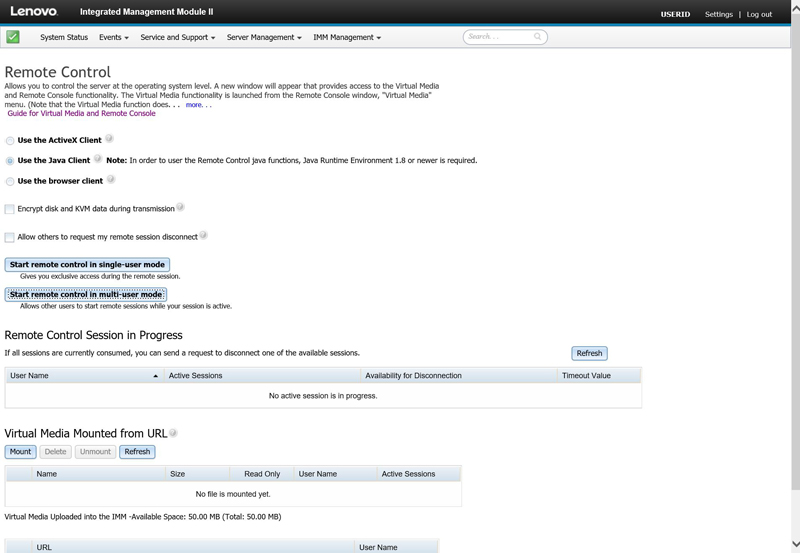
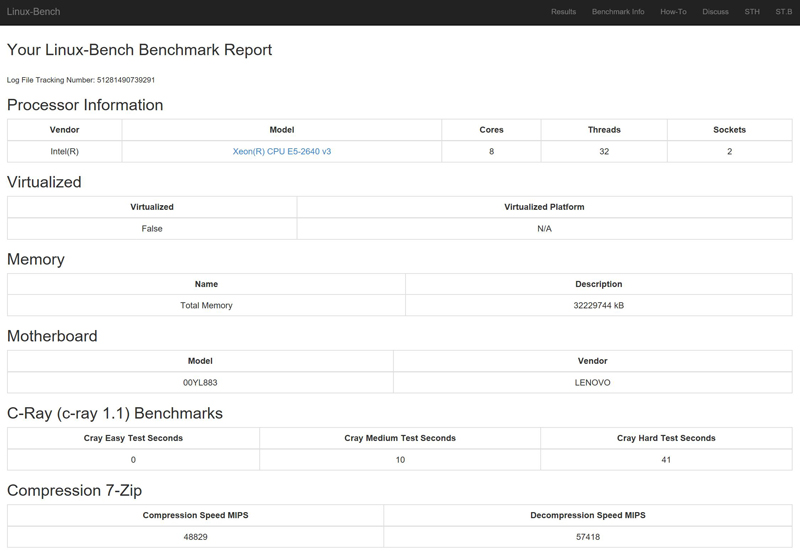
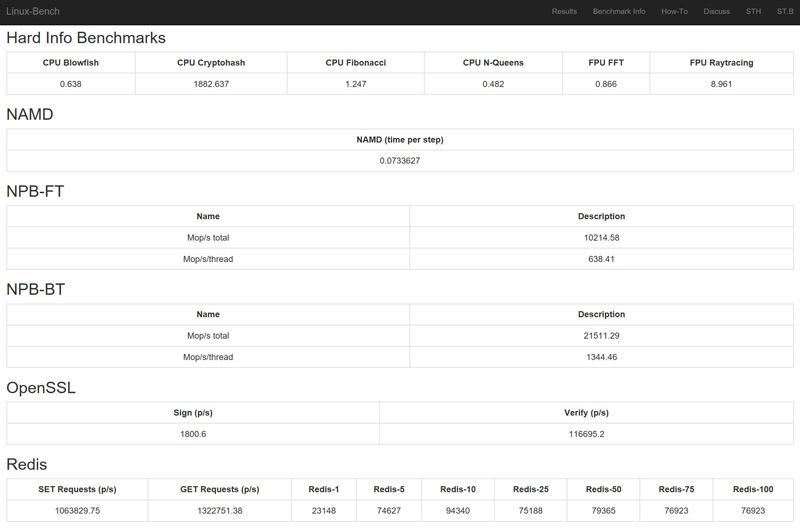
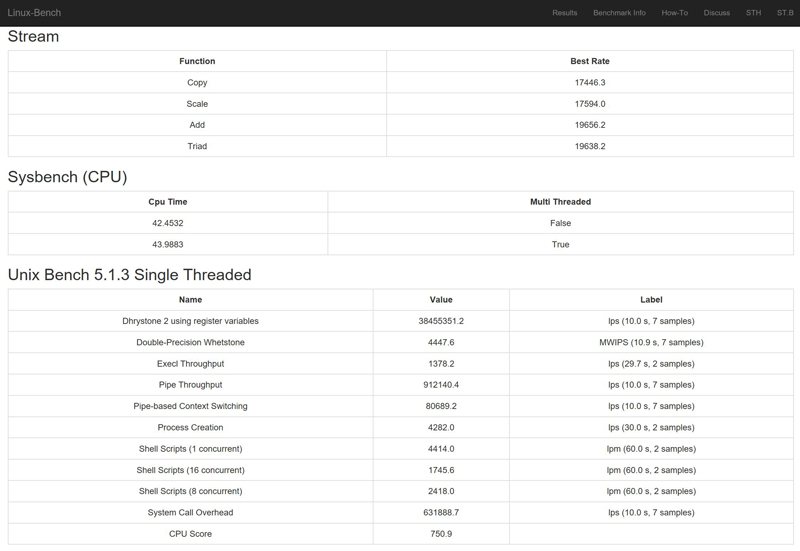



Optical drives? Seriously?
Yes, in [current year] that is just bloody insulting!
I like the drive size mix and match.
Great review. Thanks for the details shared.
I have supermicro motherboards that support Intel Xeon E5-2600 v3 as well as v4 CPUs.
Does this IBM / Lenovo X3500 M5 5464 type system support Xeon E5-2600 v4 CPUs also?